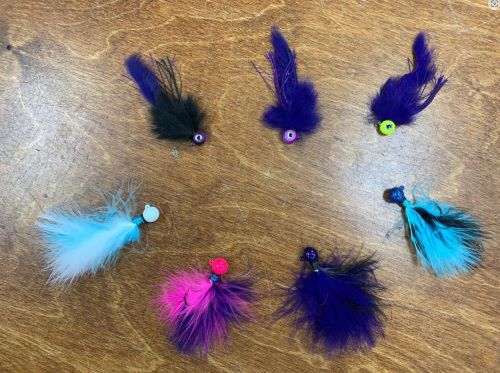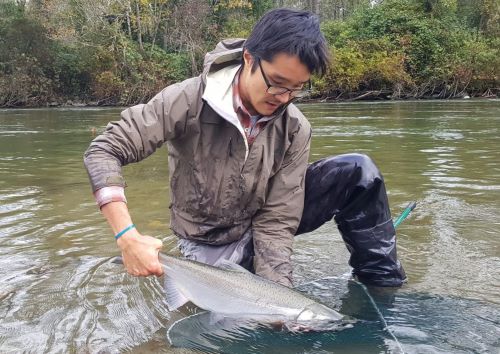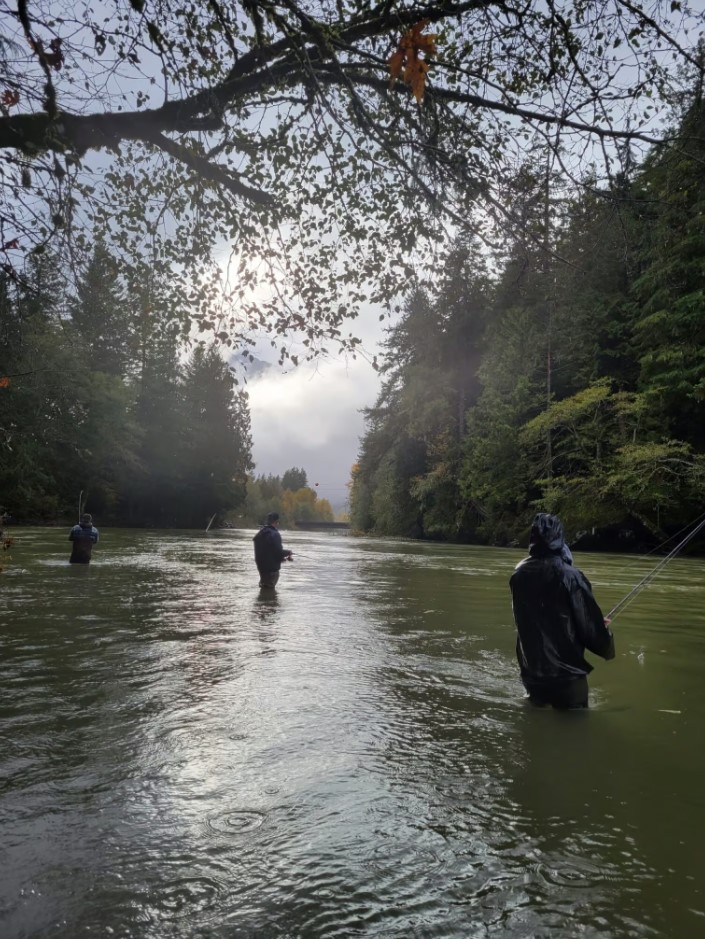When the first frosts of autumn arrive, anglers start to think about fishing for coho in rivers around the Fraser Valley. For years, this fishery usually involved using spoons, spinners, lures, bait, or flies. In the past few years, fishing for coho with jigs has become the new rage for these finicky biters.
In the ocean, coho have always liked a fluttering or “falling” prey – hence the invention of the Buzz Bomb Zelda, Stingsild, Rip Tide Striker, and Deadly Dick drift-jigging lures. You can use these lures in freshwater but with less success.
Freshwater jigs for coho
The freshwater jig craze started years ago in the United States, and has now begun to catch on in Canada – especially on the west coast rivers. Unlike the heavy, solid metal saltwater jigs, freshwater jigs have lightly weighted jig heads to which materials like marabou feathers, rabbit-fur strips, schlappen, flashabou, and angel hair are tied. Preferred colours vary from pink, white, chartreuse, red, black, blue, and purple to combinations of all these hues.

The jig heads themselves come in many hook sizes from #2 to #3/0, with #1 to # 2/0 being the most popular. Jig head weights range from 1/8 of an ounce to one ounce, with the ¼- to ½-ounce heads the most widely used. Actual colours that are successful will vary depending upon the body of water you are fishing, its clarity, and how you fish your jig.
Rods, reels and line for jig fishing
The proper type of gear for jig fishing is important. You will need a two- to 2.5-metre (six- to eight-foot) medium action spinning or baitcasting rod. Look for rods with some backbone (stiffness) yet a sensitive rod tip. Your rod should be able to handle fish up to seven kilograms (15 pounds).
It is important to match your fishing rod with a reel that has a smooth, reliable drag system. Load the reel with 10- to 20-pound-test braided superline. The use of braid is important for four reasons: braid has little or no stretch; it casts at least 30% farther than monofilament; it has the sensitivity to immediately feel the lightest bite; and it is very resistant to the damaging effect of ultra-violet rays from sunlight.
Where to find coho salmon
Coho prefer to stage in slower currents or dead water when moving up a river. Look for back eddies or backwaters on the river just off the main current. Dewdney Slough, the Vedder Canal, and the Vedder, Chehalis, Harrison, and Stave rivers are some of the waters around the Fraser Valley where jig fishing can be very successful.
Watch for fish rolling or splashing the surface in slower or dead waters, especially when fish are more active: first thing in the morning, or just before dark. When you have located some fish, cast your jig right at these rollers, and let it sink to a mid-water depth. Twitch the rod to give your jig a fluttering action while reeling it back towards you. Continue this jigging motion through the water column until you have to cast again. Be sure to try varying your retrieve – some days coho like it slower, and other days much quicker. Also vary the depth at which you fish your jig, as this can make a difference on any given body of water or at any given time of day.

When a coho hits, it usually feels like a light “tick tick” of the rod tip as the fish grabs the sinking jig. Or, when you lift up on your rod to twitch the jig, it just stops – that’s when a fish has already picked up the jig without you noticing. Either way, it’s a very exciting way to hook coho.

Jig fishing will take some trial and error to get it right, but this enjoyable method can be super-successful and is definitely worth perfecting to add to your arsenal.
Author: Nick Basok; Freshwater Fisheries Society of BC Fishing Ambassador
Banner image: Dusty Waite.
